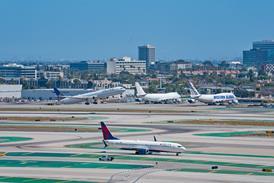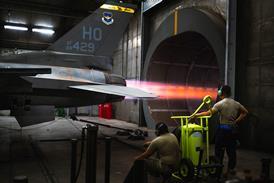Guy Norris/SEATTLE
The first complete 747 fuselage to be built using a new, computer-defined "snap-together" assembly technique is under construction at Boeing's Everett site in Washington.
The milestone marks the culmination of a five-year effort to modernise the construction of the 747 and bring it into line with the advanced manufacturing processes used on the 777 and the updated 767.
It is also a major step towards the company's goal of reducing flow time by 40% over the next five years, and producing aircraft in an average cycle time of six months. Boeing adds that the investment in the improved assembly, believed to be well in excess of $200 million, represents "a huge commitment to the future of the 747 programme".
The technique combines the accurate fuselage assembly (AFA) process that Northrop Grumman and Boeing defined in 1994, and the FAIT (fuselage assembly improvement team) effort which Boeing undertook at Everett to modify tooling and manufacturing to incorporate the benefits of AFA.
The process began with the digitising of the original 1960s drawings of the aircraft to create a digital database that could be manipulated using the CATIA computer-aided design and manufacturing system. Northrop Grumman, which builds the bulk of the 747 fuselage, used the database to make more accurate "super panels" for the 42, 44 and 46 sections of the body.
The FAIT effort simplifies assembly techniques by using precision holes in the super panels and other parts of the structure to "self-locate" the panels to each other. The precision fit of the panels is achieved using laser alignment and computer-controlled positioning systems, and eradicates the need for the traditional assembly tools and jigs which were expensive to maintain and keep within tolerances.
The first aircraft, line number 1236 - a 747-400 for Japan Airlines - is due to enter final body join later this month and should be delivered around November.
Source: Flight International























